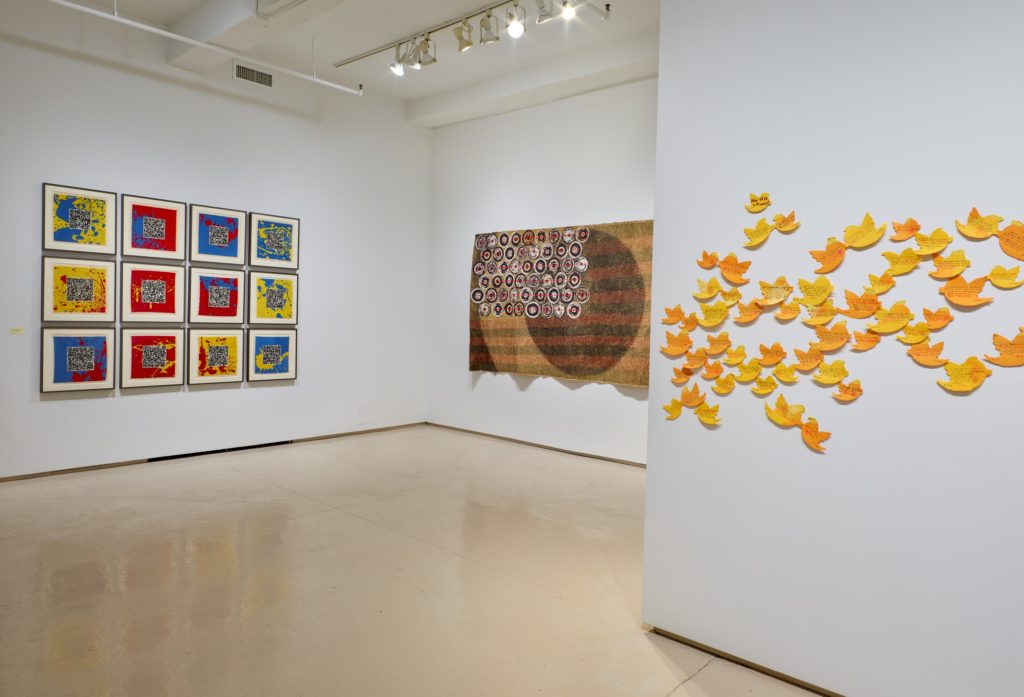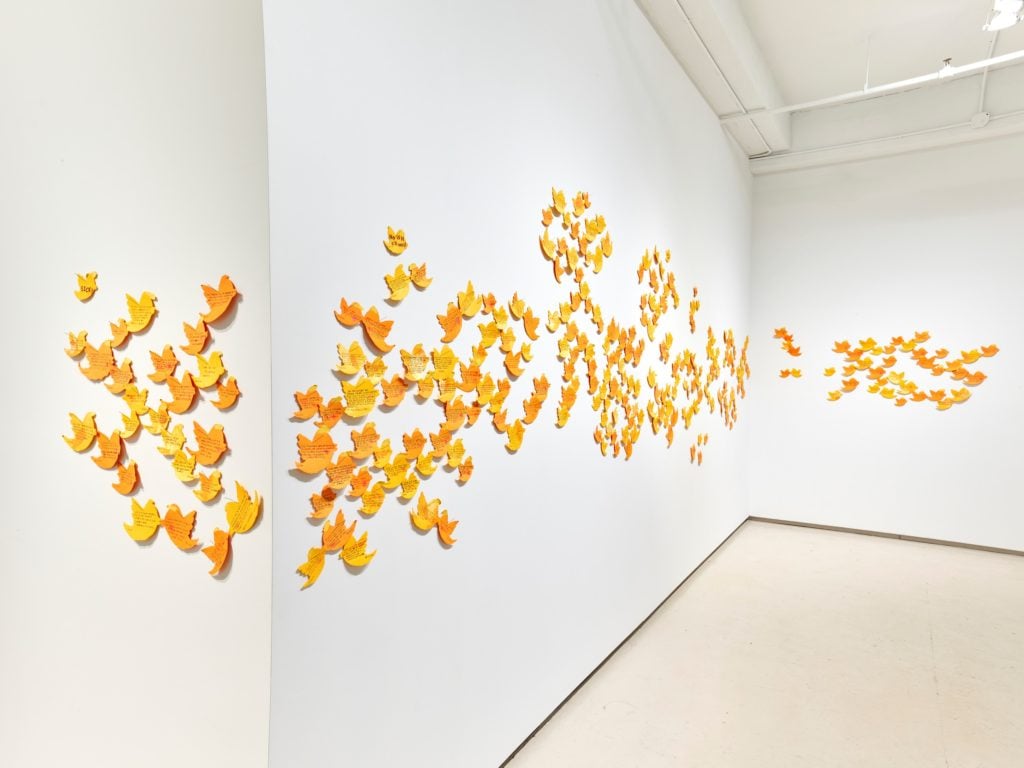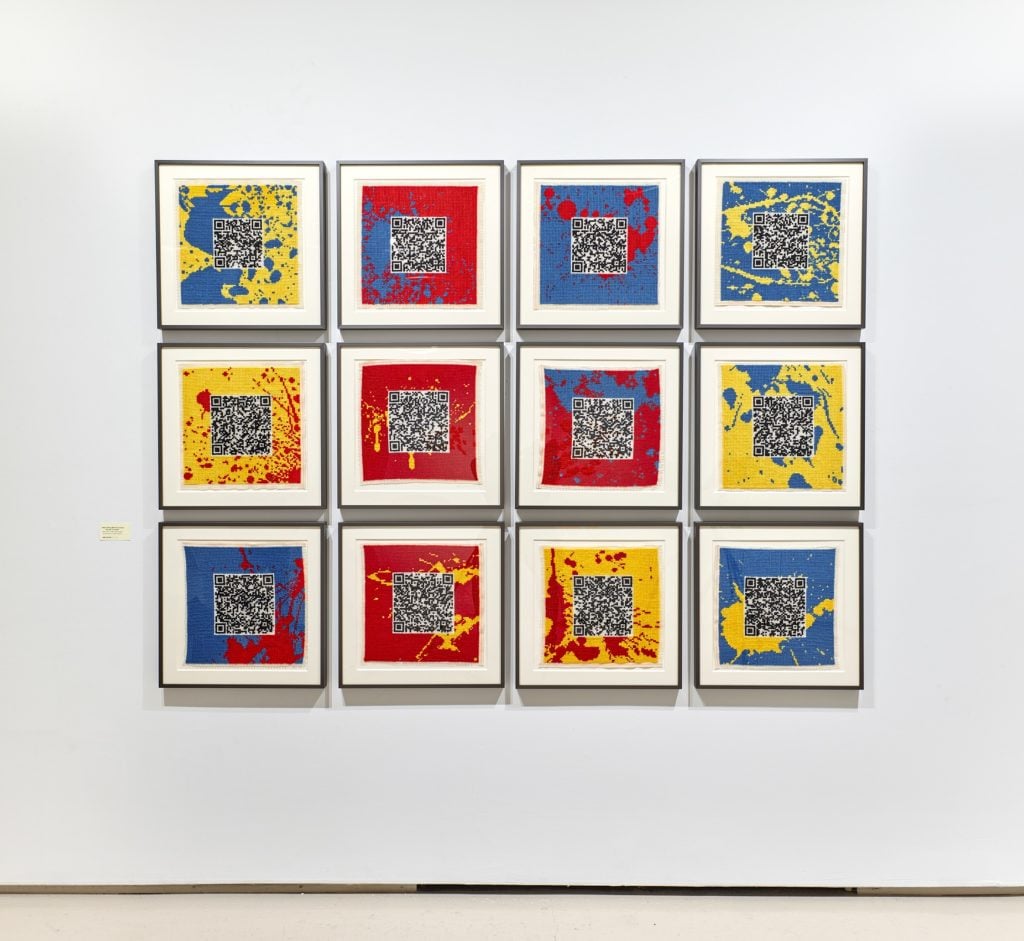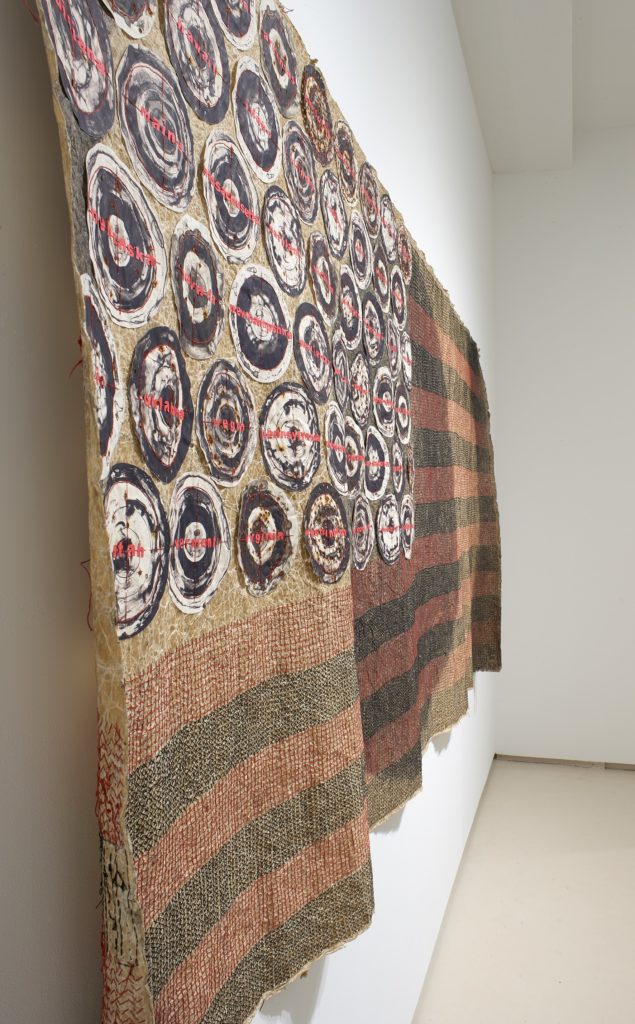This Artist Collected 300 of Trump’s Most Egregious Tweets and Turned Them Into a Party of Pecking Birds


Artnet Gallery Network

Perhaps nothing better sums up the singularly impulsive nature of the Trump regime than the president’s own Twitter account. That’s certainly what Honolulu-based artist Deborah G. Nehmad thought when she set out to confront the controversial president in her new show “TWIT,” currently on view at Kim Foster Gallery in New York.
For the titular work in the exhibition, Nehmad gathered 300 of Trump’s most contentious tweets (from both before and after his election), stamped them onto sheets of paper cut out like Twitter birds, and pinned them to the walls.

Deborah G. Nehmad, TWIT (2017). Courtesy of Kim Foster Gallery.
“As an artist who focuses on political and social issues, I could not ignore Trump,” Nehmad tells artnet News. “The tweets were an obvious target because they represent Trump uncensored.”
The individual “twits” are arranged chronologically and grouped together in a form that resembles a migration pattern. Through it, a narrative emerges, painting a picture of the man behind the impetuous language. Adding to the visual metaphor are tweets that are positioned beak-to-beak for when the messages contradict each other, perhaps ironically adding homoerotic undertones.

Deborah G. Nehmad, what’s wrong with this country? – the next 12 months (2016). Courtesy of Kim Foster Gallery.
Elsewhere in the gallery, Nehmad tackles the rampant rise of gun violence in the US, particularly among youth. Her 2016 installation what’s wrong with this country?—the next 12 months consists of 12 square needlepoints, each devoted to one month in the year following the 2012 massacre at Sandy Hook Elementary School in Newtown, Connecticut. It’s a period of time that saw 137 children aged 10 and under killed by guns. On each of the needlepoints is a unique QR code breaking down the statistics of those deaths, which can be read with an app downloaded to a smartphone.
“My focus on gun violence in America began in 2010,” says Nehmad. “By the end of 2012, I was ready to move on to other issues when the shooting at Sandy Hook Elementary School happened. I had also recently read about a two-year-old killing his mother with a gun he grabbed from her purse while sitting in a shopping cart. As a mother and an activist, I was devastated.”

Deborah G. Nehmad, OLD GLORY (2017). Courtesy of Kim Foster Gallery.
“I opted for needlepoint because of its traditional family invocation of ‘home sweet home,’” she says. “I thought needlepointing a QR code, a means of communicating contemporary data, was a provocative element that added another layer of context to my message.”
For Nehmad, a former attorney, the path from her law practice to an art career has been circuitous. “As a child of the Vietnam generation, I became politically aware and active in my teens,” she says. “In college, I prioritized my interest in law over my passion for art,” pursuing a law degree at Georgetown and working on progressive causes.
“When a life-changing accident halted my legal career, I had the time and inclination to rekindle my interest in creating art,” she says. “It took me more than ten years to find my artistic ‘voice’ in confronting issues of political and social injustice.”
Now, she believes that addressing these matters is her responsibility as an artist. “I believe that addressing social and political issues is a moral imperative,” she says.
TWIT is on view through February 17, 2018 at Kim Foster Gallery, 529 W. 20th Street, New York.